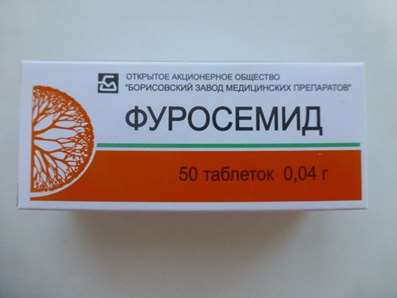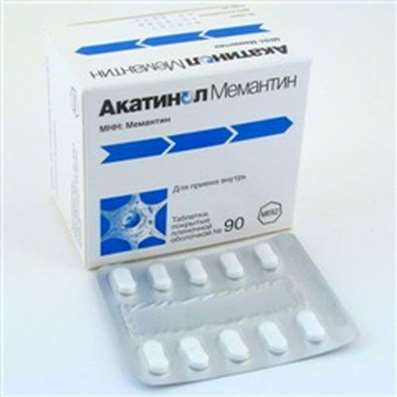Instruction for use: Levodopa + Carbidopa
I want this, give me price
The Latin name of the substance Levodopa + Carbidopa
Levodopum + Carbidopum (genus. Levodopi + Carbidopi)
Pharmacological groups
Dopaminomimetics in combination
Antiparkinsonics in combination
The nosological classification (ICD-10)
G20 Parkinson's disease: A trembling paralysis; Idiopathic Parkinsonism; Parkinson's disease; Symptomatic Parkinsonism
G21 Secondary Parkinsonism: Medicinal Parkinsonism; Parkinsonism; Parkinsonism symptomatic; Disorders of extrapyramidal system; Parkinson's Syndrome
Application in pregnancy and lactation
Action category for fetus by FDA - C.
Model clinical-pharmacological article 1
Pharmacotherapy. An antiparkinsonian combination is a combination of carbidopa (an inhibitor of aromatic amino acid decarboxylase) and levodopa (a precursor of dopamine). Eliminates hypokinesia, rigidity, tremor, dysphagia, drooling. The antiparkinsonian effect of levodopa is due to its transformation into dopamine directly into the central nervous system, which leads to the replacement of the dopamine deficiency in the central nervous system. The dopamine formed in the peripheral tissues does not participate in the realization of the antiparkinsonian effect of levodopa (does not penetrate the central nervous system) and is responsible for the majority of side effects of levodopa. Carbidopa, an inhibitor of peripheral dopa-decarboxylase, reduces the formation of dopamine in peripheral tissues, which indirectly leads to an increase in the amount of levodopa entering the central nervous system. The optimal combination of levodopa and carbidopa is 4: 1 or 10: 1. The effect of the drug is manifested during the first 24 hours after the start of the procedure, sometimes after the first dose. The full effect is achieved within 7 days.
Pharmacokinetics. Data on the pharmacokinetics of carbidopa are limited. Levodopa, when taken orally, is rapidly absorbed from the digestive tract. Absorption - 20-30% dose, TCmax for oral intake - 2-3 hours. Absorption depends on the rate of evacuation of the stomach contents and the pH in it. The presence of food in the stomach slows down absorption. Some food amino acids can compete with levodopa for absorption from the intestine and transport through the BBB. In large quantities is contained in the small intestine, liver and kidneys, only about 1-3% penetrates the brain. In unchanged form is excreted by the kidneys (35% within 7 h) and through the intestine. T1 / 2 - about 1 hour, for administration in conjunction with carbidopa -. About 2 hours metabolized in all tissues, mainly by decarboxylation to form dopamine which does not penetrate the BBB, metabolites - dopamine, norepinephrine, epinephrine the kidneys. About 75% of renal elimination of metabolites for 8 hours. After oral administration of healthy individuals and patients with Parkinson's disease carbidopa, radiolabelled, in a single dose, the maximum level of radioactivity determined after 2-4 hours in plasma after administration of healthy persons and after 1,5-5 h in patients with Parkinson's disease. Excretion of the drug with urine and feces is approximately the same in both groups. Among the metabolites are excreted in the urine, the core is an alpha-methyl-3-methoxy-4-hydroxyphenylpropionic acid, and alpha-methyl-3,4-digidroksifenilpropionovaya acid. They make up about 14 and 10% of excreted metabolites, respectively. In smaller quantities, 2 other metabolites are found. One of them was identified as 3,4-dihydroxyphenylacetone, others as N-methylcarbidopa (preliminarily). The content of each of these substances is not more than 5% of the total amount of metabolites. In the urine, unchanged carbidopa is also found. Conjugates have not been identified.
Indications. Parkinson's disease, parkinsonian syndrome (except caused by antipsychotic drugs) - postencephalitic, against cerebrovascular diseases, intoxication by toxic substances (including carbon monoxide, or Mn).
Contraindications. Hypersensitivity, zakratougolnaya glaucoma, melanoma and suspected of it, skin diseases of unknown etiology, simultaneous reception of non-selective MAO inhibitors, age to 18 years.
Carefully. Myocardial infarction with rhythm disturbances (in the anamnesis), CHF and other severe SSS, severe lung diseases, incl. asthma, lung disease, epilepsy, and others. convulsive seizures (history), erosive and ulcerative lesions gastrointestinal tract (a risk of bleeding from the upper GI), diabetes, and others. decompensated endocrine disease, severe liver and / or kidney failure, otkratougolnaya Glaucoma, pregnancy, lactation.
Dosing. Inside, 1/4 tablets (250 mg / 25 mg) 2-3 times a day, then increase the dose by 1/4 tablet every 2-3 days to achieve the optimal effect. Usually the optimal effect is observed at a dose of 1-2 tablets (250 mg / 25 mg) per day. The maximum daily dose is 1.5 g of levodopa and 150 mg of carbidopa (6 tablets of 250 mg / 25 mg).
Side effect. From the CVS: arrhythmia and / or palpitation, orthostatic reactions, including a decrease or increase in blood pressure, fainting; phlebitis.
From the digestive system: vomiting, anorexia, diarrhea, constipation, dyspepsia, dry mouth, change in taste, dark saliva, bleeding from the gastrointestinal tract, ulcer 12 duodenal ulcer.
From the hematopoiesis: leukopenia, thrombocytopenia, anemia, incl. Hemolytic, agranulocytosis.
From the nervous system: dizziness, headache, drowsiness, neuroleptic malignant syndrome, episodes of bradykinesia (on-off syndrome), sleep disturbances, including nightmares, insomnia; psychotic reactions including delusions, hallucinations and paranoid thinking, confusion, agitation, paresthesia, depression (including suicidal intent), dementia, increased libido. The development of seizures has been reported, however, the causal relationship with taking the drug has not been established.
Allergic reactions: angioedema, urticaria, pruritus, hemorrhagic vasculitis (Henoch-Schonlein purpura), bullous rashes (including pemphigus similar to the reaction).
On the part of the respiratory system: dyspnoea, upper respiratory tract infections.
From the skin: skin rash, increased sweating, darkening sweat, alopecia.
From the urinary system: urinary tract infections, frequent urination, darkening of urine.
Laboratory parameters: decrease in Hb and hematocrit increased ALT, AST, LDH, alkaline phosphatase, hyperbilirubinemia, increased BUN, Coombs positive, hyperglycemia, leucocyturia, bacteriuria and hematuria.
Other: chest pain, asthenia.
Other adverse reactions were observed with the use of levodopa alone, so they can be noted when using a combination of levodopa and carbidopa: from the side of CVS-myocardial infarction.
On the part of the digestive system: gastrointestinal pain, dysphagia, salivation, flatulence, bruxism, a burning sensation of the tongue, heartburn, hiccough.
From the side of metabolism: swelling, reduction or weight gain.
From the nervous system: ataxia, extrapyramidal disorders, falling, anxiety, gait disturbance, nervousness, decreased thinking acuity, memory loss, disorientation, euphoria, blepharospasm, trismus, increased tremor, numbness, muscle twitching, activation of latent Horner syndrome, peripheral neuropathy.
From the respiratory system: pain in the throat, cough.
From the skin: malignant melanoma, "tides" of blood.
From the senses: oculogic crisis, diplopia, visual impairment, mydriasis.
From the genitourinary system: urine retention, urinary incontinence, priapism.
Other: abdominal pain, fatigue, weakness, pain in the lower extremities, dyspnoea, malaise, hoarseness of voice, agitation.
Laboratory indicators: leukopenia, hypokalemia, hypercreatininaemia and hyperuricemia, proteinuria and glucosuria.
Overdose. Treatment: gastric lavage, close observation and ECG monitoring for the timely detection of arrhythmia; If necessary, antiarrhythmic therapy.
Interaction. With simultaneous application of levodopa with beta-adrenostimulyatorami, ditiline and drugs for inhalation anesthesia may increase the risk of heart rhythm disturbances; With tricyclic antidepressants - reduced bioavailability of levodopa; diazepam, phenytoin, clonidine, m-holinoblokatorami, antipsychotic drugs (neuroleptics) - butyrophenone derivatives, difenilbutilpiperidina, thioxanthene, phenothiazine, clozapine, and pyridoxine, papaverine, reserpine may decrease antiparkinsonian action; With Li + drugs increases the risk of dyskinesias and hallucinations; With methyldopa - aggravation of side effects.
With simultaneous application of levodopa with MAO inhibitors (with the exception of MAO-B inhibitors), circulatory disorders are possible (administration of MAO inhibitors should be discontinued in 2 weeks). This is due to the accumulation under the influence of levodopa dopamine and norepinephrine, inactivation of which is inhibited by MAO inhibitors, and a high probability of development of excitation, increased blood pressure, tachycardia, facial flushing and dizziness.
In patients receiving levodopa, the use of tubocurarine increases the risk of a marked decrease in blood pressure.
Iron salts can reduce the bioavailability of levodopa and carbidopa; The clinical significance of such an interaction is unknown.
Although metoclopramide improves bioavailability of levodopa, accelerating gastric emptying, nevertheless it can adversely affect the control of the disease, due to its antagonism with dopamine receptors.
Special instructions. It is unacceptable to suddenly stop taking levodopa (with a sudden withdrawal, it is possible to develop a symptom complex resembling a malignant neuroleptic syndrome, including muscle rigidity, increased body temperature, abnormalities in the psyche and increased activity of CK in the blood serum).
It is necessary to monitor patients who have suddenly had to reduce the dose of the drug or interrupt its administration, especially if the patient receives antipsychotic drugs.
Do not prescribe to eliminate extrapyramidal reactions caused by drugs.
In the process of treatment, it is necessary to monitor the patient's mental status, the pattern of peripheral blood.
Foods high in protein can interfere with absorption.
Patients with glaucoma against the background of taking the drug should regularly monitor intraocular pressure.
It is recommended to take with food or with a small amount of liquid, the capsules are swallowed whole.
During long-term treatment, periodic monitoring of liver, hematopoiesis, kidney and SSS functions is advisable.
Before the planned general anesthesia, the drug can be taken as long as the patient is allowed oral intake.
After surgery, the usual dose can be administered again as soon as the patient is able to take the drug orally.
During the treatment period, care must be taken when driving vehicles and engaging in other potentially dangerous activities that require an increased concentration of attention and speed of psychomotor reactions.

 Cart
Cart





